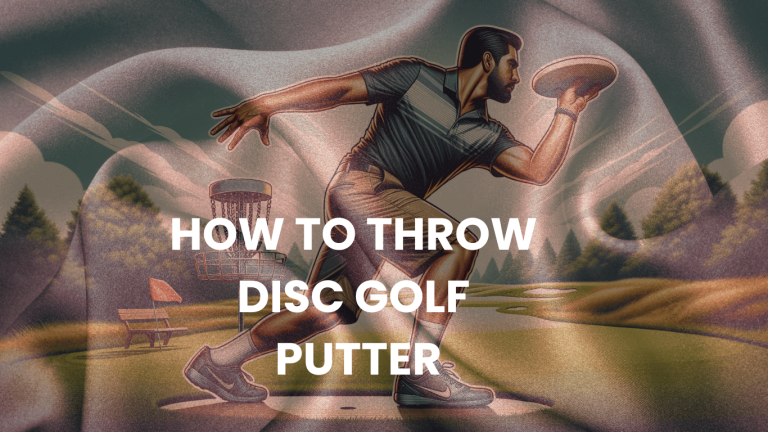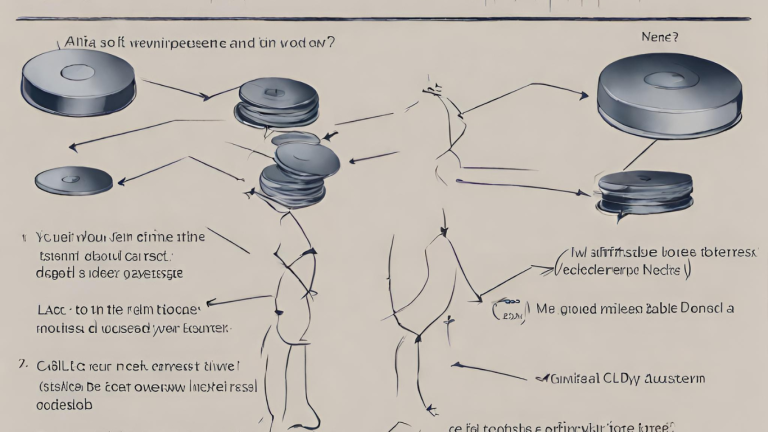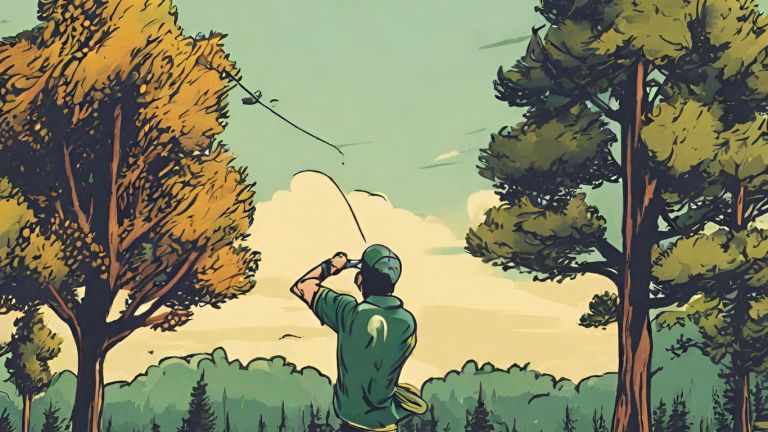What is Disc Golf and How Is It Played? A Comprehensive Guide to Understanding and Playing This Exciting Sport
Discover the world of Disc Golf – its rules, equipment, and techniques in this detailed guide for beginners and enthusiasts. When I first heard about Disc Golf, I was intrigued. “Discs instead of golf balls? How does that work?” I thought. If you’re as curious as I was, you’re in for a treat. Let me walk you through the exciting world of Disc Golf.
Disc Golf, often simply called “Disc Golf,” is a thrilling outdoor sport that combines the precision of traditional golf with the flying finesse of Frisbee. Yes, you read that right—Frisbees! But it’s not your average game of tossing a plastic disc aimlessly. It’s a strategic, challenging, and incredibly fun sport that anyone can enjoy.
In this guide, I’ll be your trusty caddy, showing you the ropes, sharing tips from personal experience, and diving into the basics. We’ll explore the rules, equipment, and techniques that make Disc Golf such a captivating pastime. So, grab your favorite flying disc, and let’s hit the course together.
What is Disc Golf and How Is It Played?
It’s a sunny day at the park, and I’m standing on the tee pad, ready to take my first throw in a game of Disc Golf. The lush green fairway stretches ahead of me, and the target, a metal basket, beckons in the distance. With a deep breath, I grip my disc, feel the excitement building, and let it fly.
Disc Golf, my friends, is not your typical sport. It’s a captivating blend of strategy, precision, and the great outdoors. Unlike traditional golf with clubs and balls, we use specially designed flying discs to navigate the course. It’s like a treasure hunt, where the “X” marks the spot with a satisfying clinking sound as the disc lands in the basket.
In this guide, I’ll be your tour guide through the world of Disc Golf. We’ll cover the ins and outs of the game, from how to start your own Disc Golf journey to mastering those expert throws. So, if you’re ready to embark on this exciting adventure, let’s tee off together!
Introduction to Disc Golf
As someone who fell in love with Disc Golf, I want to share the magic of this sport with you. In this section, we’ll dive deep into what Disc Golf is all about. We’ll start by defining it, explore its surging popularity and appeal, and understand why learning Disc Golf is more than just a hobby—it’s a lifestyle that brings joy, health, and camaraderie.
Definition of Disc Golf
Disc Golf, also known as “Frisbee Golf,” is a captivating outdoor sport that blends the finesse of Frisbee throwing with the precision of traditional golf. The objective is simple: navigate a course from a designated tee area to a target basket in as few throws as possible. Each throw is a stroke, and the player with the lowest score at the end of the course wins. Imagine the thrill of sending a disc sailing through the air, avoiding trees and hazards, and finally, with a satisfying clink, watching it land in the basket. It’s a blend of skill, strategy, and the joy of being outdoors.
Growing Popularity and Appeal
Disc Golf isn’t just a niche pastime anymore; it’s a rapidly growing phenomenon. More and more people are discovering the charm of this sport, and it’s not hard to see why. It offers an accessible entry point for beginners, making it perfect for all ages and fitness levels. The sense of community is strong, with local clubs and tournaments bringing enthusiasts together. As an eco-friendly sport that doesn’t require a massive investment, Disc Golf has a broad appeal that transcends traditional barriers.
You May Also Like To See: How To Dye Disc Golf Disc?
Importance of Learning Disc Golf
Learning Disc Golf goes beyond mastering a game; it’s about embracing a lifestyle that encourages physical activity, mental agility, and social connections. It’s an opportunity to unplug from the digital world, immerse yourself in nature, and enjoy the thrill of competition. Moreover, Disc Golf courses are often situated in beautiful natural settings, offering a chance to appreciate the great outdoors while engaging in a fun and challenging sport. Whether you’re aiming for a leisurely round with friends or a competitive edge, learning Disc Golf can be a rewarding journey.
History Of Disc Golf
Let’s step back in time and uncover the fascinating history of Disc Golf. As I delved deeper into this sport, I couldn’t help but wonder how it all began and evolved into the Disc Golf we know today. In this section, we’ll explore its origins and evolution, unravel key milestones in Disc Golf history, and pay homage to the notable figures and players who have left an indelible mark on this remarkable journey.
Origins and Evolution
The roots of Disc Golf trace back to the 1960s when a group of friends tossed Frisbees at targets like lampposts and trees in California. It was a playful pastime, but the idea of using Frisbees as golf discs took shape. The first official Disc Golf course emerged in 1975, designed by Ed Headrick, often dubbed the “Father of Disc Golf.” From these humble beginnings, the sport flourished, with courses sprouting across the U.S. and worldwide. The evolution of disc technology and course design has continually challenged players, making Disc Golf an exciting and dynamic pursuit.
Key Milestones in Disc Golf History
Disc Golf’s history is studded with significant milestones. In 1976, the Professional Disc Golf Association (PDGA) was founded, becoming the governing body for the sport. The first PDGA World Championship was held in 1982, marking a turning point in competitive Disc Golf. As the sport grew, innovative tournaments and formats emerged, captivating enthusiasts and fostering a sense of community. Notable tournaments like the Beaver State Fling and the United States Disc Golf Championship have become iconic events on the Disc Golf calendar, attracting top talent from around the globe.
Notable Figures and Players
The world of Disc Golf boasts a roster of remarkable figures and players who have contributed to its growth and popularity. Legends like Ken Climo, “Steady” Ed Headrick, and Juliana Korver have not only dominated the game but also served as ambassadors, inspiring the next generation of players. Their dedication, skill, and passion have left an indelible mark on the sport, ensuring that Disc Golf continues to thrive and evolve.
Basics Of Disc Golf
Let’s get into the nuts and bolts of Disc Golf—its basics. As I embarked on my Disc Golf journey, understanding the core elements became crucial. In this section, I’ll break down the essentials, starting with the objective and gameplay. We’ll explore the game’s goals and scoring system. Then, we’ll dive into the equipment, covering the types of discs you’ll encounter and the accessories that make your Disc Golf experience complete.
Objective and Gameplay
Goal of the Game
At the heart of Disc Golf lies a straightforward objective: complete the course in as few throws as possible. Each throw is akin to a golf stroke. The ultimate aim? To land your disc in the target basket, usually in as few throws as you can manage. Just like traditional golf, lower scores signify better performance. It’s a thrilling test of precision and strategy as you navigate fairways, dodge obstacles, and aim for that satisfying clink of a successful putt.
Scoring System
Disc Golf employs a simple yet effective scoring system. Each throw counts as one stroke, and the player with the fewest strokes at the end of the course wins. Par, a predetermined number of throws, serves as a benchmark for each hole. Finishing a hole in fewer throws than par results in a negative score (under par), while exceeding par results in a positive score (over par). Keep track of your scores to challenge yourself and measure your improvement over time.
Equipment
Types of Discs (Drivers, Mid-ranges, Putters)
Your Disc Golf arsenal consists of three primary types of discs: drivers, mid-ranges, and putters. Drivers are designed for distance, soaring through the air with speed and power. Mid-ranges offer precision and control for shorter throws and approaches. Putters, as the name suggests, are perfect for precise, short-distance putts. Each type serves a specific purpose on the course, allowing you to adapt your game to different situations.

Accessories (Bags, Targets, Disc Retrievers)
Enhance your Disc Golf experience with accessories like specialized disc bags to carry your discs comfortably. Target baskets, the heart of the game, catch your throws and challenge your putting skills. For those pesky throws that land in hard-to-reach places, disc retrievers come to the rescue, helping you retrieve your discs with ease.
First Step On The Course
Now that we’ve covered the basics of Disc Golf, it’s time to take your first steps onto the course. As someone who started from scratch, I understand the importance of getting started on the right foot. In this section, we’ll explore how to choose the right discs based on weight and flight ratings, taking into account your skill level. We’ll also delve into the basic rules and etiquette of Disc Golf, covering everything from teeing off to fairway play, and finally, putting and scoring.
Choosing the Right Discs
Weight and Flight Ratings
Selecting the right discs is crucial to your success in Disc Golf. Discs come in various weights, and their flight ratings indicate how they behave in the air. When you’re just starting, opt for lighter discs, as they’re easier to control and provide longer distances for beginners. Pay attention to flight ratings, which typically include Speed, Glide, Turn, and Fade. A disc’s flight ratings help you understand its flight characteristics. For example, a disc with a high Speed rating requires more power but offers greater distance, while a disc with a high Glide rating stays aloft longer. Tailor your disc selection to your playing style and gradually experiment with different discs as you gain experience.
Player Skill Level
Your skill level plays a significant role in disc selection. Beginners benefit from discs designed for ease of use and forgiveness. As you progress and refine your technique, you can explore more specialized discs. Remember, it’s okay to start with a limited selection of discs and gradually expand your collection as you become more comfortable with the game.
Basic Rules and Etiquette
Teeing Off
Teeing off in Disc Golf is akin to a golfer’s drive. Stand behind the designated tee pad, take a deep breath, and visualize your throw. The tee pad marks the starting point for each hole. Your goal is to throw your disc toward the target basket while avoiding obstacles. Respect the flow of play by waiting your turn and offering the same courtesy to others.
Fairway Play
Once you’ve teed off, you’ll find yourself on the fairway. Here, you’ll continue to advance toward the target basket with a series of throws. Keep in mind that Disc Golf courses often feature natural obstacles like trees and terrain variations. Adapt your throws to the situation, and always prioritize safety and courtesy.
Putting and Scoring
As you approach the target basket, it’s time to put your putting skills to the test. The objective is to complete the hole by landing your disc in the basket with the fewest strokes possible. When you’re close to the basket, use a putter disc for precision. Maintain fair play by adhering to the rules and etiquette, including marking your lie, not stepping past your lie during a throw, and keeping a respectful distance from fellow players.
Playing Disc Golf
Now that you’re well-acquainted with the basics, let’s dive into the thrilling world of playing Disc Golf. As someone who’s navigated fairways and faced the challenge of the wind, I’m excited to guide you through this section. We’ll explore the intricacies of the course layout, uncover essential techniques and throws, and discuss strategies for success on the Disc Golf course.
Course Layout
Tees and Baskets
Disc Golf courses are carefully designed to provide a challenging yet enjoyable experience. Tee pads, marked with designated tee signs, serve as the starting points for each hole. These provide a solid foundation for your throws. The target baskets, often elevated and adorned with chains, await your precise throws. Each basket signifies the end goal of the hole, and landing your disc inside it completes the hole.
Fairways and Hazards
Disc Golf courses feature fairways, much like traditional golf. Fairways guide your throws toward the target basket, offering varying degrees of challenge. Natural obstacles like trees, bushes, and terrain variations create an exciting environment. Navigating these hazards with skill and strategy is an integral part of the game. Embrace the challenge, adapt your throws, and relish the satisfaction of conquering each fairway.

Techniques and Throws
Backhand and Forehand Throws
Two fundamental throwing techniques, the backhand and forehand throws, form the backbone of Disc Golf. The backhand throw involves a fluid, arcing motion, while the forehand, also known as the flick, offers a straighter trajectory. Mastering these throws allows you to navigate a wide range of situations on the course. Experiment, practice, and find your signature style to conquer fairways and reach the target with precision.

Putting Techniques
Putting in Disc Golf is the equivalent of sinking a golf ball into the hole. Close to the target basket, you’ll need a reliable putting technique. It’s all about finesse and accuracy. Grip your putter disc with confidence, focus on the chains, and execute your putt. Develop consistency in your putting to shave strokes off your scorecard and inch closer to victory.
Strategies for Success
Course Management
Course management is a strategic aspect of Disc Golf. Analyze each hole, taking into account fairway layout, obstacles, and wind conditions. Plan your throws strategically to minimize risks and maximize chances of success. Learn when to play aggressively and when to opt for a safer approach. Course management is a chess match with nature, and mastering it can lead to lower scores.
Wind and Weather Considerations
The wind can be both your ally and your adversary in Disc Golf. Pay close attention to wind direction and strength, as it significantly affects disc flight. Adjust your throws accordingly, considering how the wind might alter the trajectory. Similarly, be prepared for various weather conditions and adapt your game plan as needed.
Community
Now that we’ve delved into the mechanics of Disc Golf, it’s time to explore the vibrant and welcoming Disc Golf community. From associations and local clubs to the numerous health and fitness benefits, and crucial safety tips, there’s more to Disc Golf than just throwing discs. As an enthusiast who’s felt the warmth of this community, I’m thrilled to guide you through this section.
Disc Golf Associations and Organizations
Disc Golf has a strong foundation of associations and organizations that support and promote the sport. The Professional Disc Golf Association (PDGA) is the premier governing body, responsible for setting rules, organizing events, and ensuring fair play. Being part of the PDGA offers a gateway to competitive play and a network of fellow Disc Golf enthusiasts.
Local Clubs and Events
Local Disc Golf clubs are the heartbeat of the community. They organize events, tournaments, and casual rounds, fostering camaraderie and friendly competition. Joining a local club connects you with experienced players, helping you improve your skills and feel like a valued member of the Disc Golf family. Attending local events is a fantastic way to bond with others who share your passion.
Benefits of Joining the Disc Golf Community
The Disc Golf community offers a wealth of benefits beyond the sport itself. It’s a place where you can make lifelong friends, share stories, and grow as an individual. The sense of belonging is profound, and the support from fellow players can be truly inspiring. Whether you’re a seasoned pro or a novice, the Disc Golf community welcomes you with open arms.
Health and Fitness Benefits
Physical Exercise
Disc Golf isn’t just a game; it’s a fantastic form of exercise. As you traverse the course, you’ll engage in low-impact aerobic activity, improve your cardiovascular health, and strengthen your muscles. The joy of the game encourages you to stay active and enjoy the great outdoors.
Mental Benefits
The mental benefits of Disc Golf are equally impressive. It’s a game that challenges your focus, concentration, and problem-solving skills. The tranquility of nature, combined with the thrill of competition, provides a unique opportunity to relax your mind and escape from the stresses of everyday life.
Social Interaction
Perhaps one of the most cherished aspects of Disc Golf is the social interaction it fosters. Whether you’re playing with friends, joining a club, or participating in tournaments, you’ll connect with like-minded individuals who share your passion. The Disc Golf community is known for its inclusivity and the genuine friendships it forges.
Safety Tips
Avoiding Injury
While Disc Golf is a safe sport, it’s essential to practice good safety habits. Pay attention to your surroundings, watch for other players, and avoid obstructing their shots. Use proper throwing techniques to minimize the risk of injury to yourself and others. It’s all about creating a safe and enjoyable environment for everyone on the course.
Proper Use of Discs
Understanding your discs and their flight characteristics is vital for safe play. Avoid using discs that are too heavy or too fast for your skill level, as this can lead to erratic throws and potential hazards. Play responsibly and respect the equipment to ensure a safe and enjoyable game for all.
You May Also Like To See: How To Throw A Roller In Disc Golf?
Respect for Nature and Other Players
Lastly, Disc Golf encourages respect—for the course, nature, and fellow players. Leave no trace on the course, dispose of trash responsibly, and respect the environment. Maintain good sportsmanship by being courteous, patient, and supportive of others. Remember, Disc Golf is not just a game; it’s a community built on mutual respect and shared love for the sport.
Conclusion
In conclusion, Disc Golf is more than just a sport; it’s a journey of discovery, camaraderie, and personal growth. I’ve shared my passion for this incredible game, from its basics to the vibrant community it encompasses. So, whether you’re teeing off for the first time or a seasoned pro, remember that Disc Golf offers endless opportunities for fun, fitness, and friendship. Grab your discs, hit the course, and let the Disc Golf adventure begin!
FAQs
Q1: What is Disc Golf?
Answer:
Disc Golf is an outdoor sport where players throw specialized discs at a target basket, completing the course in the fewest throws possible.
Q2: How do you play Disc Golf?
Answer:
To play Disc Golf, start at the tee pad, throw your disc toward the target basket, and complete each hole in the fewest throws. The player with the lowest score wins.
Q3: What equipment do I need for Disc Golf?
Answer:
You’ll need Disc Golf discs, which come in various types, such as drivers, mid-ranges, and putters. Comfortable clothing and sturdy shoes are essential for a successful game.







